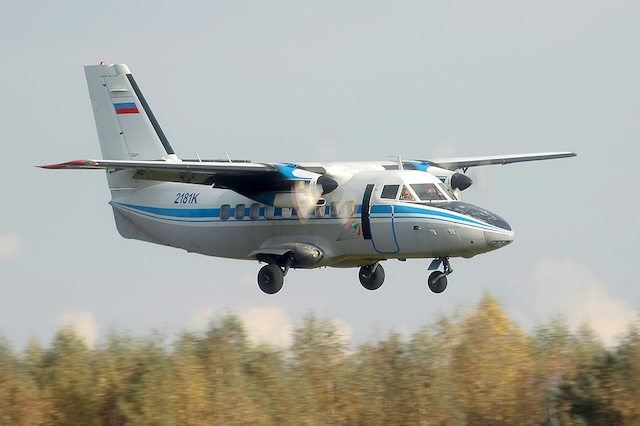L-410
Summary
| Category | Military Transport Aircraft |
| Origin country | 🇨🇿 Czech Republic |
| Manufacturer | Let |
| First flight | 16 April 1969 |
| Year introduced | 1970 |
| Number produced | 1200 units |
Description
Development of the L-410 began in the mid-1960s by the Czech aircraft manufacturer Let Kunovice, who recognized an opportunity in Aeroflot's search for a turboprop-powered replacement for the Antonov An-2 biplane. Initial studies focused on the L-400 design, with attention given to both airliner and cargo aircraft roles. Following revisions, the L-410 Turbolet emerged, and the first prototype, XL-410, conducted its maiden flight on April 16, 1969. Due to delays in the development of a suitable Czech engine, the Walter M601, both the prototype and early production models were powered by Pratt & Whitney Canada PT6-27 engines and Hartzell three-blade propellers imported from North America.
The Let L-410 Turbolet is an unpressurized all-metal high-wing commuter aircraft. It is equipped with a retractable undercarriage, and the L-410 UVP-E model incorporates two hydraulic circuits, one primary and one for emergencies, with a 28V DC main electrical system. Its de-icing system uses leading-edge pneumatic deicers and electrical heating for propellers, cockpit windshields, and pitot-static system heads. The maximum take-off weight of the L-410 UVP-E is 6400 kg, potentially increased to 6,600 kg for the E9 and E20 variants, accommodating between 17 and 19 passengers, and utilizes Avia V 510 five-blade propellers. The design is adaptable featuring special interchangeable configurations.
Large numbers of L-410s were delivered to the Soviet Union; by 1985, 500 aircraft had reportedly been obtained by various operators within the USSR alone. Accordingly, the type has been heavily operated by various ex-Soviet states, in particular Russia. Furthermore, numerous L-410s have been sold to airlines across Asia, Africa, Central America, and South America. Forty aircraft are in use throughout Europe for commercial operations.
Main Variants:
-
L-410: The initial prototype of the aircraft, of which only three units were constructed.
-
L-410A: The first production series, equipped with Pratt & Whitney PT6A-27 turboprop engines and three-blade Hartzell propellers, with a total of 25 units built.
-
L-410M: The second series, featuring Walter M601A engines and three-blade Avia V508 propellers.
-
L-410UVP: A modified third series designed for short take-off and landing (STOL) capabilities, with an extended wingspan and a higher horizontal stabilizer.
-
L 410 NG: A substantially redesigned and expanded version, powered by GE H85 engines and incorporating a glass cockpit.
Technical specifications
| Version: L-410UVP | |
|---|---|
| Maximum speed | 365 km/h (227 mph) |
| Wing area | 35.2 m² (378.9 sqft) |
| Wingspan | 19.5 m (63.9 ft) |
| Height | 5.8 m (19.1 ft) |
| Length | 14.5 m (47.5 ft) |
| Service ceiling | 7,000 m (22,966 ft) |
| Empty weight | 3,800 kg (8,378 lbs) |
| Max. takeoff weight | 5,800 kg (12,787 lbs) |
| Powerplant | 2 x turboprops Walter M601B delivering 575 kW each |
Current operating countries
| Country | Units | ||
|---|---|---|---|

|
Russia | 53 (+2) | |

|
Czech Republic | 6 | |

|
Slovakia | 6 | |

|
Tunisia | 5 | |

|
Bangladesh | 3 | |

|
Bulgaria | 2 | |
| 🇬🇶 | Equatorial Guinea | 2 | |

|
Kazakhstan | 2 | |

|
Lithuania | 2 | |
| 🇸🇸 | South Sudan | 2 | |

|
Mozambique | 1 | |

|
Slovenia | 1 | |
All operators

